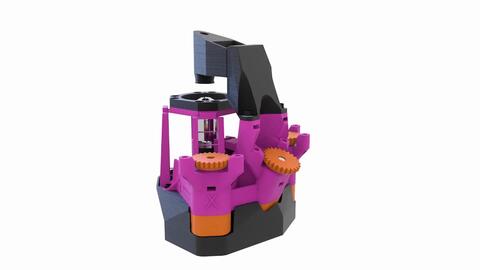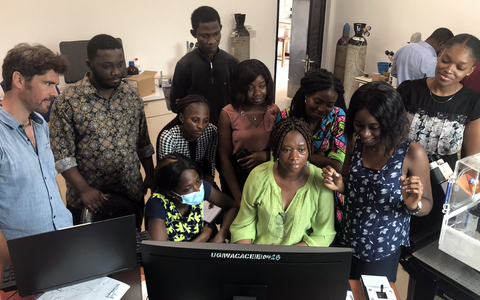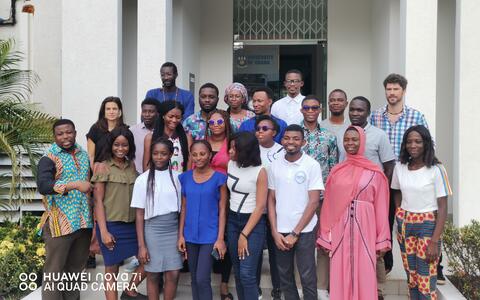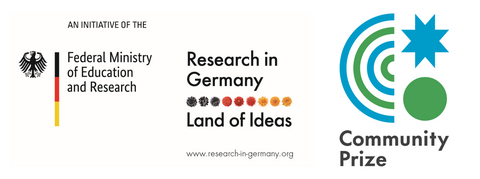Microscopy Workshops in Ghana
Peran Hayes
Since 2018, you have given three microscopy courses in Ghana and Nigeria for Master and PhD students. How did you come up with the idea?
The idea came to me on a beach in Thailand. After finishing my PhD at the Center for Genomic Regulation in Barcelona I was travelling for a year in Asia and wasn’t sure if I wanted to return to research. I was wondering what to do afterwards.
And you went to Africa?
I heard about an organization that sets up courses and workshops with the help of scientists, usually from institutes in the global north. I like travelling. And I like teaching. So, the first time around, my motivation was exactly that – traveling and teaching in Africa. But now that I know a bit more about the situation, it has grown into promoting research infrastructure. When I moved to Berlin, I read some articles about democratizing science in Africa. And, after reminiscing about the first course at the West African Centre for Cell Biology of Infectious Pathogens (WACCBIP) in Ghana, I was driven to engage myself in the same project again.
What do people learn in your courses?
On the first course we went from basics of microscopy to fluorescence and confocal microscopy. We also talked about different advanced imaging techniques and image analysis. One thing to mention is that microscopy resources, especially in West Africa, are very sparsely available. That’s why, for our second and third courses we used the same structure, but improved bits: we took time to design a range of image analysis challenges that they could each try out and report back to the group on the problems and solutions they found, and, crucially, we incorporated the building of an OpenFlexure Microscope.
What kind of microscope is that?
The OpenFlexure Microscope can be assembled from off-the-shelf parts and 3D-printed components. Obviously, it's not going to give you the resolution of a confocal microscope. But you can build the cheapest form for about $250. It can be used to observe cells or microorganisms, or even structures inside them. It was designed by Dr Richard Bowman and his team at the University of Bath (UK) as a diagnostic tool for malaria, together with a company in Tanzania. I wanted to teach people how to build it in order to make them understand each component a lot better. And secondly, to enable them to reproduce it with a 3D printer so that more infrastructure is available to them and can be used in diagnostics and research.

Did it work?
I had no idea if anybody was going manage to build it at all. It was a lot of work. We were up until 2:30 a.m. But in the end all five groups were able to take an image! I was very, very happy! And there were heartwarming moments too: One group with only guys and one with only women were very quick compared to the rest and they were competing with each other. The race who gets the first image was pretty engaging. In the end another group, who was much slower, got the best image. Everybody in the room was pretty excited for them. This was at the third day of the two weeks course and you could see that the nervousness of the first two days broke and after that everybody was so much more engaged.
How will these courses help West Africa’s research community?
Well, you need the knowledge of how to use the microscope and the awareness of what diverse techniques are available. You need the collaborations and the network for people to share their knowledge. It is important to know where you get hold of resources. So rather than just keep running courses we're now setting up a network, which is called WAMBIAN: The West African Microscopy Bio Image Analysis Network. We are still looking for funding to run more courses, conferences and online talks. We’re also exploring other solutions to improve research infrastructure such as equipment loans.
How is your project connected to the “Back to the Roots” program at the Max Delbrück Center?
At first, I thought it was essential for “Back to the Roots” to go back to your home country. But it is not. In Ghana I talked about research opportunities in Germany for an afternoon. I showed them the microscopy platform at the Max Delbrück Center and introduced them to the German Academic Exchange Service (DAAD), the Africa-German Network of Excellence in Science (AGNES) and various organizations, that promote scientists moving to Germany.
Is anybody considering a career in Germany?
When you meet people in Ghana pretty much everybody says they want to try and find a way to go to Europe or America, particularly students. And at least one of my students from the first course did come to Germany. Last year he wrote an email saying: “Actually, I'm now at the Robert Koch Institute in Berlin.” Another student from the Ghana course went on to organize the remote course we gave in Nigeria, and a student on that course is now organizing another course at his home institute. It’s really great to watch the network growing in this way.
The interview was conducted by Christina Anders.
Further information
- WAMBIAN
- WACCBIP holds bio-imaging workshop
- The OpenFlexure Microscope
- Team project aims to find talents abroad
- DFG Community Prize
- Research Funding at the Max Delbrück Center











